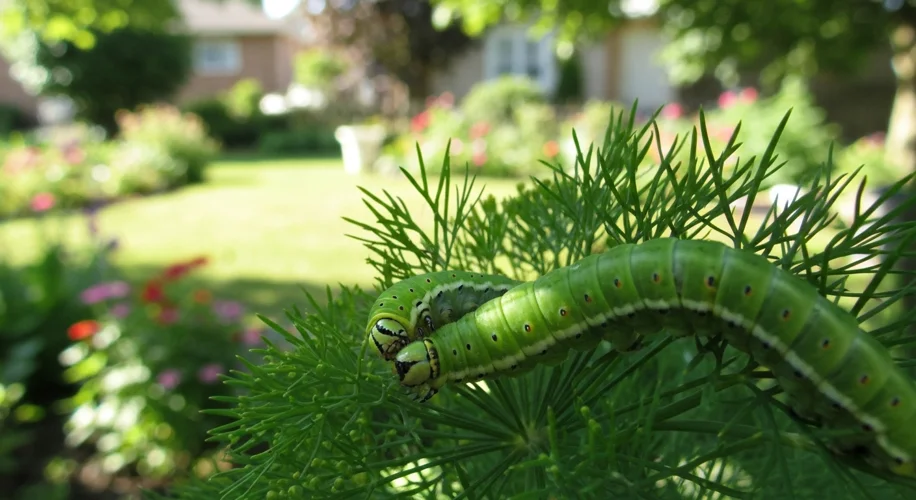This year, my dill plant went from a modest 4-foot specimen to a vibrant green jungle. It was a magnet for life, specifically for a small group of swallowtail caterpillars. Watching them munch their way through the feathery fronds was a highlight of my gardening season. They were growing so fast, getting bigger and plumper by the day, practically devouring the plant.
Then, one morning, they were gone. All of them. Not a single caterpillar in sight. My first thought, naturally, was: “Did they become dinner?”
It’s a fair question for anyone who gardens or spends time observing nature. The garden is a bustling ecosystem, and many creatures rely on others for survival. So, while it’s possible a hungry bird or other garden predator found my plump caterpillars, there’s another, more magical explanation.
Caterpillars, as we see them, are just one stage of a butterfly’s life. They are essentially eating machines, focused on growing as quickly as possible. Once they reach a certain size and maturity, their instinct kicks in, and they prepare for the next phase: metamorphosis.
Swallowtail caterpillars, like many others, will find a safe, sheltered spot to pupate. This is when they form a chrysalis (for butterflies) or a cocoon (for moths). Inside this protective casing, a remarkable transformation takes place. The caterpillar’s body breaks down and reorganizes into the form of a butterfly or moth.
So, while it’s tempting to imagine a dramatic predation event, it’s far more likely that my dill-munching friends have simply entered a new stage of their life cycle. They’ve likely crawled off to find a suitable location to build their chrysalis, a hidden spot where they can safely undergo their incredible transformation.
What’s the takeaway for us gardeners? Firstly, embracing the natural cycles in our gardens is incredibly rewarding. Having caterpillars means attracting butterflies, which are beneficial pollinators themselves. Secondly, if you want to encourage more butterflies, providing host plants like dill is key. But don’t be alarmed if your caterpillars suddenly vanish – it’s usually a sign of progress, not peril.
While I’ll miss seeing their constant munching, I’ll be keeping an eye out for the new swallowtail butterflies that will hopefully emerge from their hidden cocoons. It’s a beautiful reminder that disappearance in the garden often means a new beginning is just around the corner.

